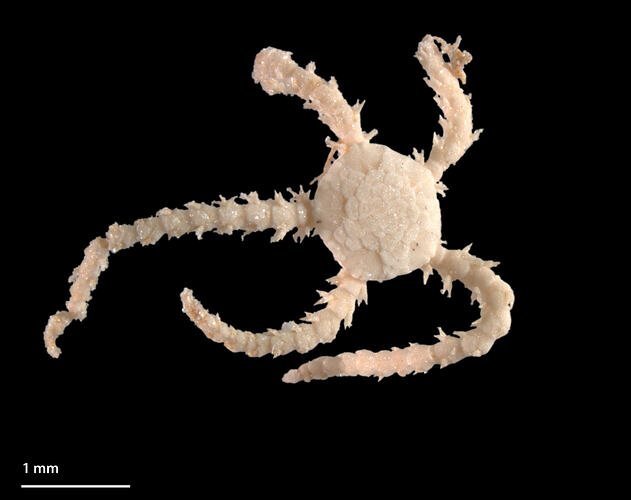General Description
Body (disc) covered with plates. Colour varies, including orange, grey or with spots. Disc up to 5 mm wide, arm up to 3 cm long.
Biology
These brittle stars have specialised cells along the arms (photocytes) that emit light (bioluminescence) when touched. When attacked, the animal can cast-off an arm and it wriggles away, glowing and luring the predator away. They can employ either deposit- or suspension-feeding, the latter being prevalent when there is water movement. Several arms are raised stiffy into the current, the arm spines become covered with mucus, and trapped food particles are removed by the tube feet. They brood young internally.
Distribution
Worldwide. Australian coastal waters.
Habitat
Seaweed and rocky areas, to depths over 1,000 m.
More Information
-
Animal Type
-
Animal SubType
-
Brief Id
Covered in plates, emits light (bioluminescence).
-
Colours
Orange, Grey, White
-
Habitats
-
Diet
Omnivore
-
Diet Categories
Organic matter
-
Endemicity
-
Commercial
No
-
Conservation Statuses
CITES: Not listed, FFG Threatened List: Not listed, DSE Advisory List: Not listed, IUCN Red List: Not listed
-
Depths
Deep ( > 30 m)
-
Water Column Locations
On or near seafloor
-
Taxon Name
-
Scientific Author
(Delle Chiaje, 1828)
-
Common Name
Brittle Star
-
Phylum
-
Subphylum
-
Class
-
Subclass
-
Superorder
-
Order
-
Suborder
-
Superfamily
-
Family
-
Genus
-
Species Name
squamata

